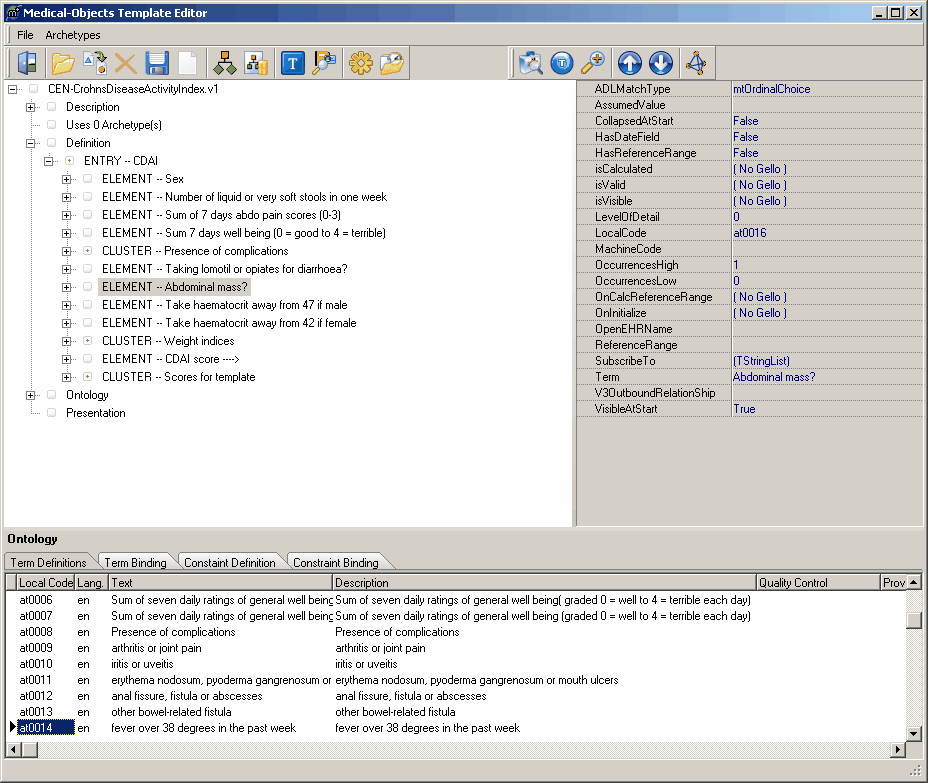MO Template Editor
Medical-Objects has released a free EN/ISO 13606-2 Archetype editor with Template extensions. It is available from Free Version of Template Editor.
Using Medical-Objects Template Editor
Simple worked example
Using preview
Terminology binding and constraint
Show the ADL, XML and HL7 for a LOINC panel archetype
Adding GELLO
Registry server access
More datatypes
Combining archetypes into Templates
An example screen shot of the MO Template Editor at work is below. Some information about archetypes and MO's use of GELLO in them are below the image.

Archetypes provide constraints on an underlying reference information model. There are ongoing efforts within HL7 to provide reusable 'chunks' of the RIM that are at a level that makes them useful for interpretation and re-use. But progress is slow. An alternative approach has been taken thus far in Europe and elsewhere with the progression of the CEN/ISO 13606 standard, principally Part 2 which describes the form of data extracts, structured with archetypes. Archetypes were described originally by the openEHR community and the EN 13606 standard is slightly less complicated but follows a similar form. It is a stable format however, while the openEHR ADL version is under constant review and change.
The Medical Objects template editor saves and loads ADL according to the 13606-2 standard (ADL v1.2) and it can export in a xml format that supports extended semantics (the template functionality), including GELLO event handling. We use the HL7/ANSI standard GELLO v. 1 as a 'scripting' language for node value validation, initialisation, calculation and visibility. Constructs are also tagged and editable for HL7 v.2 message generation. Datatypes are mapped accordingly. Example data can be created in HL7v2 format using the Australian Archetypes in V2 draft standard approach. A working GELLO interpreter/IDE is included in the editor.
Further information on the standard is available at http://www.en13606.org/